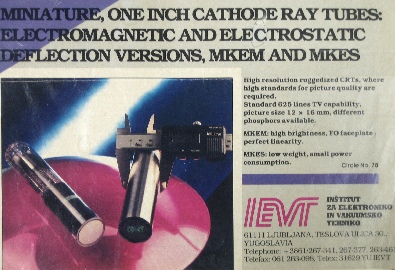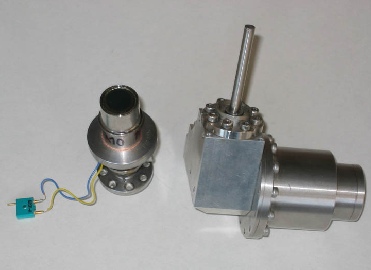History of the Vacuum laboratory
The Vacuum lab has a long standing tradition in research and development in the area of vacuum opto-electronics. The start of these activities in Slovenia goes back into the fifties of the previous century, when intensive research and development of electron tubes for night vision applications was launched by the the Defense Industry. This work was performed in the Institute of Electronics, which was later in the seventies renamed into the Institute of Electronics and Vacuum Technique, (IEVT). The operation of electron tubes for night-vision (image intensifiers) is based on the amplification of the electron energy emerging from the photocathode on the way to the anode and conversion of the kinetic energy into visible light, enabled by the luminescent screen. The night-vision electron tubes were designed into different configurations (diode, triode or tetrode), size and modes of amplification (cascade or microchannel plate). All of them are members of a wide family of electron-optical components, which require high vacuum for their operation.
With such gained experiences and knowledge, the development of miniature cathode electron tubes, also known as Brown's tubes, started in the beginning of the eighties. For decades, these were the only electron tubes used for TV sets. The topmost achievement of the Vacuum lab were various miniature cathode ray tubes that are named "one-inch CRTs" since their display has approx. 1 inch diameter. Configurations with the electromagnetic deflection were labelled as MKEM and were applied in laser range-finders, while the others with the electrostatic deflection were named as MKES and applied as display units in portable thermal cameras, due to their low-power consumption. For these cameras, cryogenic detectors for the 10µm IR range were also developed in Vacuum lab. Operation of these detectors requires an effective thermal insulation, which is enabled by vacuum. The progress of alternative electronic displays has partially reduced the role of cathode ray tubes, but at the same time the advance in the area of processing of materials has enabled their additional development. The last comprehensive development was successfully concluded for a foreign customer in 2001.
|
|


